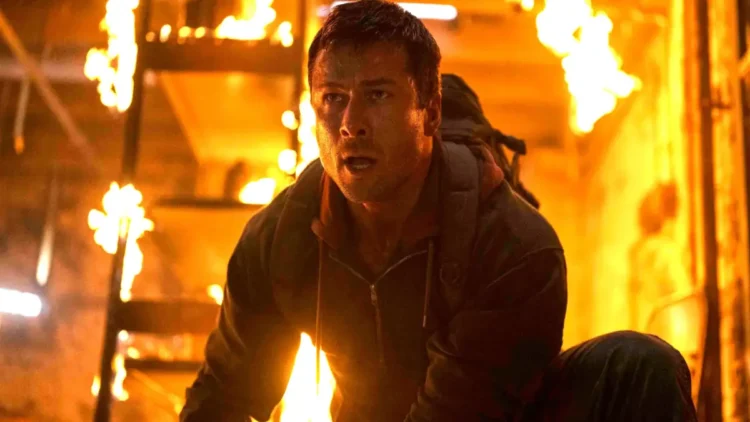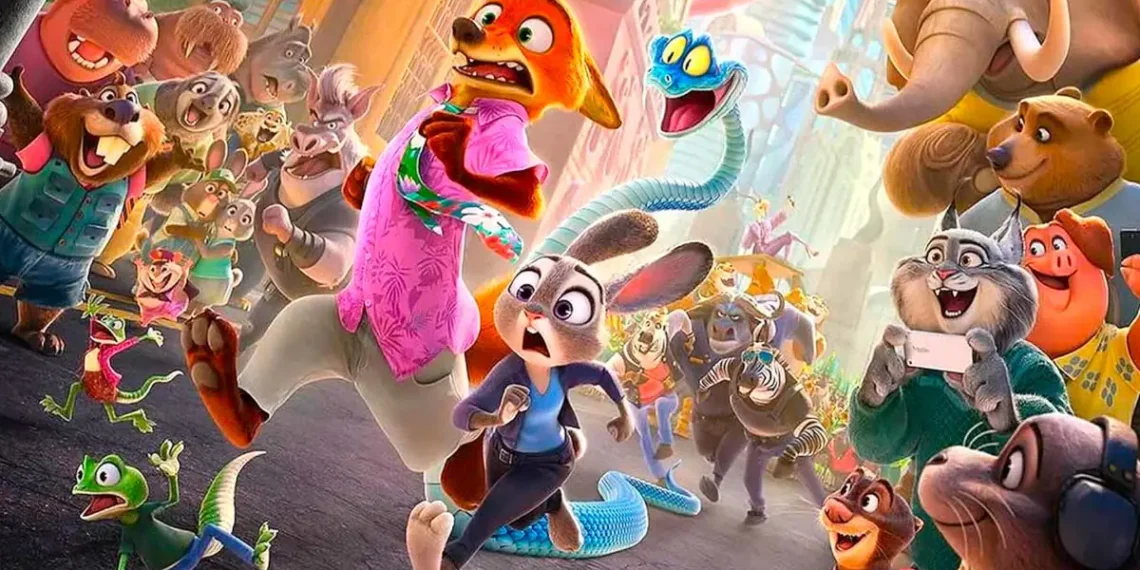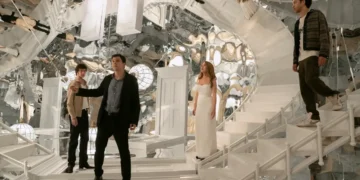Inside The Running Man’s Wild Final Act — A Full Breakdown
Warning: Major spoilers ahead.
Edgar Wright’s The Running Man is not a remake of the 1987 Arnold Schwarzenegger film — it’s a full reimagining rooted in Stephen King’s original 1982 novel (written under the Richard Bachman pseudonym). Fans expecting neon gladiators and campy one-liners will find something very different: a bleak political thriller that follows a desperate father willing to risk everything for his sick child.
While Wright’s stylistic fingerprints are all over the movie, the ending is pure dystopian tragedy, punctuated by a chilling proposal and one devastating revelation. Here’s exactly how the new Running Man concludes.
Does The Running Man Have a Post-Credits Scene?
No mid-credits or post-credits scenes await viewers. However, the closing credits do feature in-universe imagery that subtly expands the world — a nod to what happens to society after the game’s final broadcast.
A Runner Who Volunteers — Not a Fugitive Forced In
In this adaptation, Ben Richards (Glen Powell) isn’t captured and tossed into the game. He volunteers for it. His infant daughter Cathy is gravely ill, and the family can’t afford the life-saving medicine she needs. Playing The Running Man guarantees one thing: money for his family, even if Ben doesn’t make it out alive.
For 30 days, Ben must evade five professional Hunters led by the masked McCone (Lee Pace). The game is a national obsession. The rewards are enormous. And the risks? Almost always fatal.
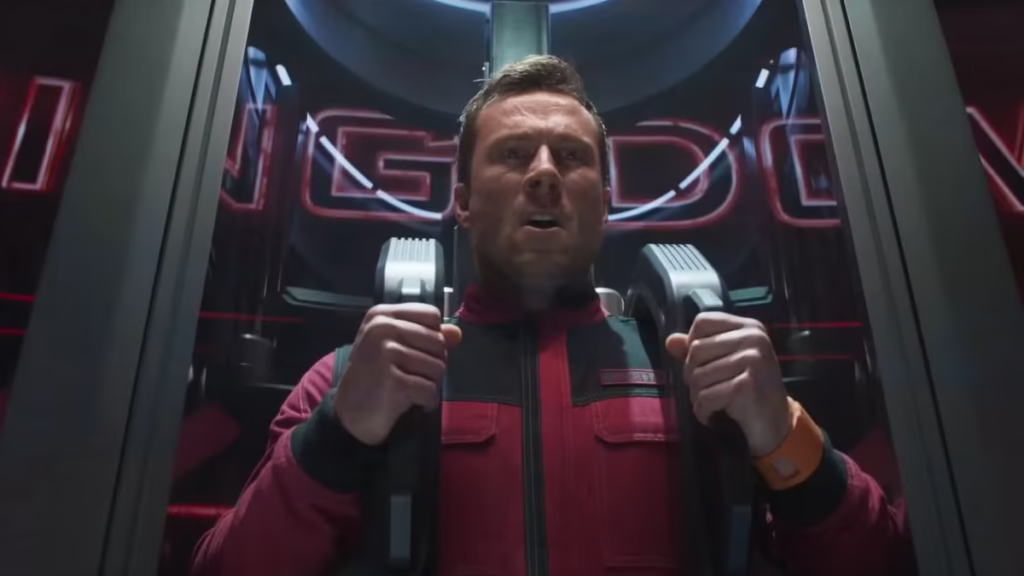
Across the country, Ben moves through cities trying to stay unseen — but the Games Network controls everything. They manufacture footage, manipulate public opinion, and paint him as a violent sociopath using deepfake rants and staged propaganda clips. Host Bobby T (Colman Domingo) and executive producer Dan Killian (Josh Brolin) treat it all like primetime entertainment.
The Games Network’s Grip — And the Resistance Growing Underground
Safe houses, hidden tapes, and a rising symbol
Ben finds help in unexpected places. People like Bradley (Daniel Ezra) give him shelter, fully aware that the Network has been poisoning society for years — literally and figuratively. Corporate silence around radiation exposure has given Bradley’s younger sister terminal cancer.
Bradley becomes an underground information broker, distributing illegal tapes revealing the truth about the Network. His masked broadcasts gain traction. Public doubts begin to grow.
Still, The Running Man’s influence is almost total. The company operates the game shows, the police, the media, and most of the country’s infrastructure.
But the cracks are showing. “Richards Lives” graffiti begins popping up across cities. Ben’s survival — and his unwillingness to play by the Network’s script — is inspiring people.
Welcome to Derry — A Stephen King Easter Egg With a Twist
When Boston becomes too dangerous, Bradley sends Ben to a contact in Derry, Maine, a location King fans know all too well. In the book, Derry appears briefly; here, it becomes a full subplot.
Elton (Michael Cera), a radical zine publisher with a vendetta, hides Ben in his home — at first. But Elton’s recklessness spirals. A botched attempt to lure police into a trap ends in a deadly confrontation with Hunters. Elton is killed, but his booby-trapped vehicle lets Ben destroy one of the Hunters before escaping.
The martyrdom of both Bradley’s sister and Elton only accelerates Ben’s rising cult-hero status.
The Final Act: A Hostage, A Plane, and a Lie That Might Save His Life
Amelia enters the story — and the narrative shifts
As the net tightens around him, Ben jumps into a stranger’s car, taking Amelia (Emilia Jones) hostage. She’s a believer — someone who fully buys the Network’s lies about him.
Ben pleads his case. She doesn’t budge.
When two armed civilians spot him and try to kill him for reward money, Ben nearly surrenders. But Network agents shoot the would-be heroes first, revealing their true motive: Ben is worth more alive than dead… for now.
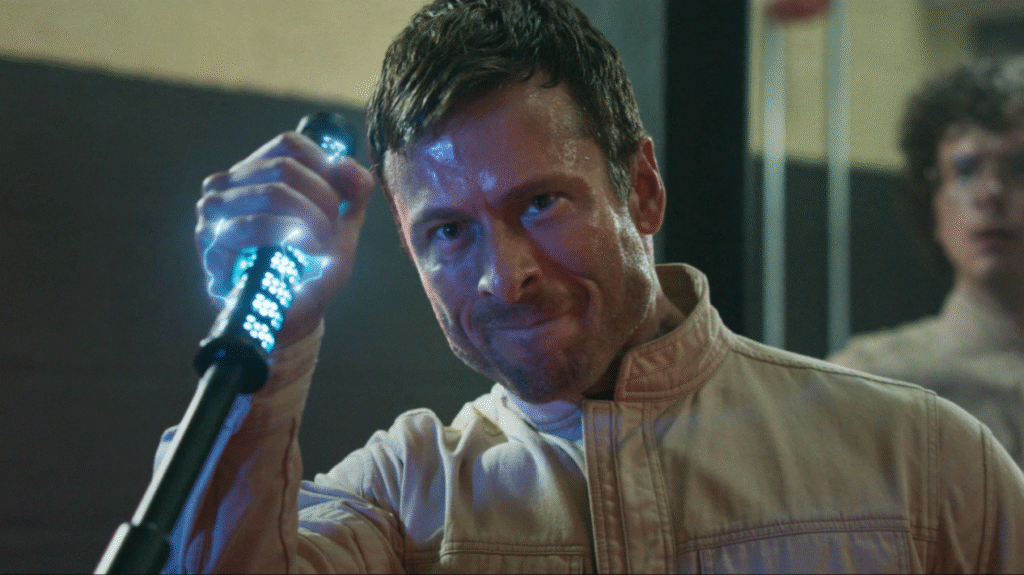
He bluffs about having an explosive device in Amelia’s bag and demands a private plane at the Derry airport.
Surprisingly, Amelia chooses to stay with him, acting as his accomplice. Her change of heart is sudden — one of the film’s few rushed emotional beats — but she becomes key to maintaining the ruse.
McCone Unmasked — And Killian’s Ultimate Proposition
On the runway, McCone appears, finally removing his mask. Ben and Amelia are led onto the small aircraft, only for Ben to realize something horrifying:
The flight crew are the remaining Hunters.
Then Killian calls.
“Become Hunter #6.”
Killian reveals the truth:
- Their scanners detected Ben’s “bomb” was fake.
- He has no leverage left.
- His run has become a ratings phenomenon.
- The Network wants him to switch sides.
Ben is offered a new identity, his own show, and a permanent role as an elite Hunter — the very thing he’s been running from. The audience, already sympathetic to him, would cheer his transformation.
But Killian has a final blow to deliver:
He shows Ben footage of his wife and daughter being murdered.
The Plane Fight — And a Devastating Confession
Enraged, broken, and manipulated, Ben plays along long enough to get a gun and storm the cockpit. Chaos erupts. Automatic flight controls engage. In the melee, Ben kills all the Hunters except McCone.
Then McCone drops his own twist:
The footage was fake.
McCone insists:
- He didn’t kill Ben’s family.
- The Hunters don’t know where they are.
- They may still be alive.
- Killian used the same trick on him years ago.
McCone explains that he, too, was a contestant — the only one before Ben to survive 29 days. Killian offered him a deal. He accepted. And in the process, he destroyed every part of himself that once resembled a human being.
The revelation pushes Ben into a final, brutal showdown — one that determines whether he becomes the next McCone… or destroys the system entirely.
What the Ending Means
Edgar Wright’s The Running Man ends not with triumph, but with a question:
What does survival cost in a world that treats people as entertainment?
The closing credits’ in-universe imagery hints that the Network may be losing its grip — but also that its reach goes far deeper than anyone imagined.


